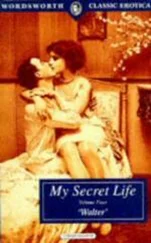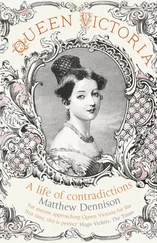* The popular reputation of dancers in the nineteenth century set them very low in the moral order; they were ranked beneath even actresses, and set almost on a par with prostitutes. This picture, however, was certainly a distortion. Although ‘respectability’ was a rather fluid concept during the early Victorian age, most ballet girls actually came from modestly ‘respectable’ homes, and lived – as far as can be ascertained – modestly ‘respectable’ lives. 12 Eleanor Henry’s position seems to confirm this point. For a start she was married. Her husband was a Mr James Henry. He listed his profession as ‘Solicitor’, although he does not appear in the law lists of the period and may well have been little more than a lawyer’s clerk. 13 At the beginning of the 1830s they were living together in the house of a Mrs Henry (perhaps James’s mother). 14 Despite this unpropitious domestic arrangement, the Revd Richard Sheepshanks succeeded not only in forming an attachment with Eleanor but also in fathering a child on her. A daughter was born on 19 August 1830. 15
Mr Henry’s attitude to, or indeed knowledge of, his wife’s liaison is unknown. He did, however, give his surname and his blessing to the infant. It was he, rather than Richard Sheepshanks, who attended the christening at St Pancras Parish Church and who had himself listed as the child’s legal father. The little girl was baptized Eleanor Louisa Moravia Henry. The last Christian name is something of a mystery, as the Henrys did not, as far as records show, belong to the Moravian sect. 16
The young Eleanor Louisa – or Nelly – was brought up in the Henry household. If Richard Sheepshanks provided some assistance he did so covertly. Nevertheless, his interest in his natural daughter does seem to have been real and, given the proximity of Woburn Place to Henrietta Street, he must have had opportunities for observing her. Almost nothing is known of Nelly Henry’s childhood, except that it was not happy. The demands of her mother’s stage work meant that she was often neglected. She did, however, show an early love for music. Her mother sang to her, and the songs of the passing street performers also caught her ear, making a lasting impression on her memory and her imagination. 17
The Henrys moved from Henrietta Street in 1833. They disappear from view but almost certainly remained in London, for, at some moment later in the decade, Eleanor broke with her husband and began a relationship with Samuel Buchanan Green, a dancing master from Highgate. She took her daughter with her and, though there is no evidence to suggest that she married Mr Green, she took his name and the young Nelly came to regard Mr Green as her ‘step-father’. 18 In November 1838, when Eleanor gave birth to a son, christened Alfred, she listed her name on the birth certificate as ‘Green, late Henry’. 19 In 1840, the Greens established a dancing school in connection with the Princess Theatre in Oxford Street. The teaching studio was immediately behind the theatre at 36 Castle Street and the family lived above it – an arrangement that can only have increased the 10-year-old Nelly’s love of music. 20
Perhaps the Revd Richard Sheepshanks disapproved of these new domestic conditions, or maybe the arrival of young Alfred placed a strain on the resources of the Green household; perhaps the Sheepshanks’ own plans to move out of London precipitated the change. Whatever the reason, at about this time Richard offered to take his natural daughter under his own care, to remove her from the stage-door world of Castle Street, to arrange for her schooling, and to provide in some as yet unspecified measure for her future. The offer was accepted and, at the beginning of the 1840s, the old loosely fixed order was broken up. 21
Nelly was sent over the Channel to a small boarding school at Neuville-lès-Dieppe. Richard Sheepshanks and his sister closed up Woburn Place and moved to a house on the outskirts of Reading, where once again they built a little observatory in the garden. The Greens continued with their school at Castle Street. And according to family tradition Mrs ‘Green, late Henry’ also performed on the stage of the Princess Theatre. 22 It is doubtful that she ever saw her daughter again. She might have encountered Richard Sheepshanks occasionally. He returned often to London during the first years of the new decade. He was engaged in the great work of his later life: the establishment of a new set of standard weights and measures, the former one having been destroyed in the fire that swept through the Palace of Westminster in 1832. In a well-insulated subterranean laboratory in the cellars of Somerset House, he carried out tens of thousands of micro-measurements in order to determine the standard yard. 23 It was a staggering exercise of both patience and artistry. He had, it was recognized, ‘an extraordinarily skilful eye with the micrometer’ and his comparisons ‘were so far superior to those of all preceding experimenters … as to defy all competition on grounds of accuracy’. 24
In 1850, Eleanor and Samuel Green vanish from the London Directories. According to the family tradition preserved by Nelly, they emigrated to Australia, where Mrs Green took to drink. 25 It has been supposed that Richard Sheepshanks arranged, if he did not insist upon, this removal, but there is no evidence to support such a theory. Nevertheless, the notion of a close relative disappearing to the Antipodes never to be heard of again was powerful in its suggestion. It became one of the defining elements in young Nelly Henry’s personal story. And it was a story that in time she would communicate to her own children, thrilling them with its mingled sense of mystery and loss. The actual moment of Eleanor Green’s departure from England, however, probably passed unknown across the Channel by her daughter. 26
Dieppe in the 1840s already had an established expatriate colony. Living was cheap there compared to England. The completion of the London, Brighton and South Coast Railway and the introduction of steam packet-boats meant that it took a mere eleven hours to travel from London to the French port. Mrs Maria Slee’s school, set – across the harbour from the old town – on the still verdant slopes of Neuville, was one of several educational establishments in the area catering for English children: 27 the bracing sea air was considered to be beneficial to youth. 28 Mrs Slee’s was a happy place, and it offered Nelly the structure and companionship that had been lacking from the lonely and bohemian years of her childhood, and also the security of real affection.
She boarded there not only during the terms but also in the holidays, growing in time to be less a pupil than a part of the family. Mrs Slee was almost a second mother to Nelly; her daughters ‘became much attached’ to their young English charge, and she to them. 29 It was during these years that Dieppe developed, for Nelly, into a charmed place – the place where ‘she was happy and well for the first time’. 30
She stayed at the school until she was almost eighteen, becoming strong, handsome and accomplished. She learnt to speak French ‘with a good accent at least’. 31 Her status and her future prospects, however, remained a mystery to her. She was aware that she was under the protection of a distinguished guardian – a Fellow of the Royal Society – but, although they corresponded, it seems that they did not meet. She did not learn the identity of her protector until 1848, when she was eighteen. 32 Richard Sheepshanks was impressed with the progress made by his daughter, and he was anxious that it should continue. But perhaps not at Dieppe. The year 1848 was one of turmoil and revolution throughout Europe. The French once again overthrew their monarch, the unfortunate Louis Philippe. He fled to England and many English residents in France made the same trip. Anti-British sentiment was rife. Richard took the precaution of arranging for Nelly to leave Dieppe to finish her education in the pretty little Baltic town of Altona near the mouth of the river Elbe. Altona was nominally a Danish town, part of the Danish-controlled duchy of Holstein. But it was just across the river from Hamburg and had strong links with the German states.
Читать дальше












